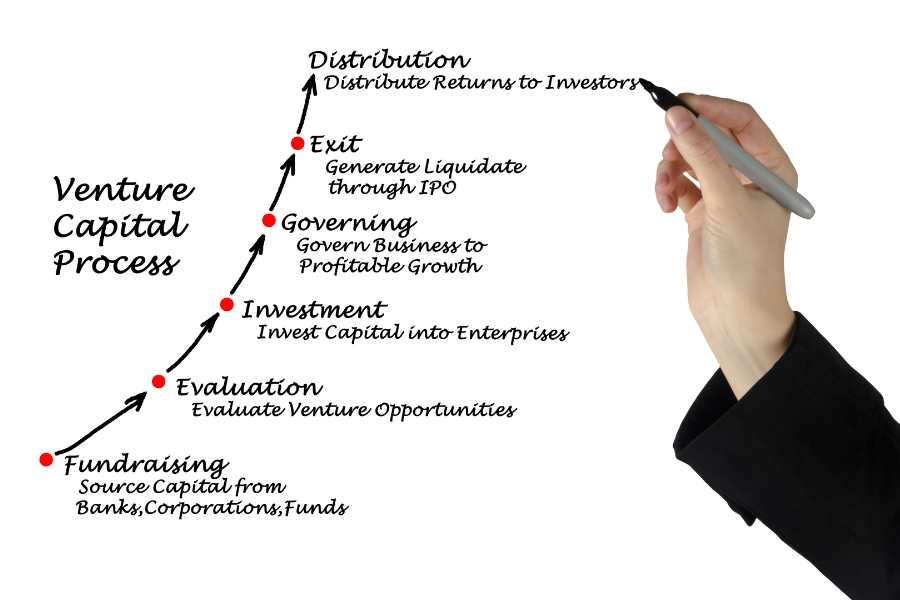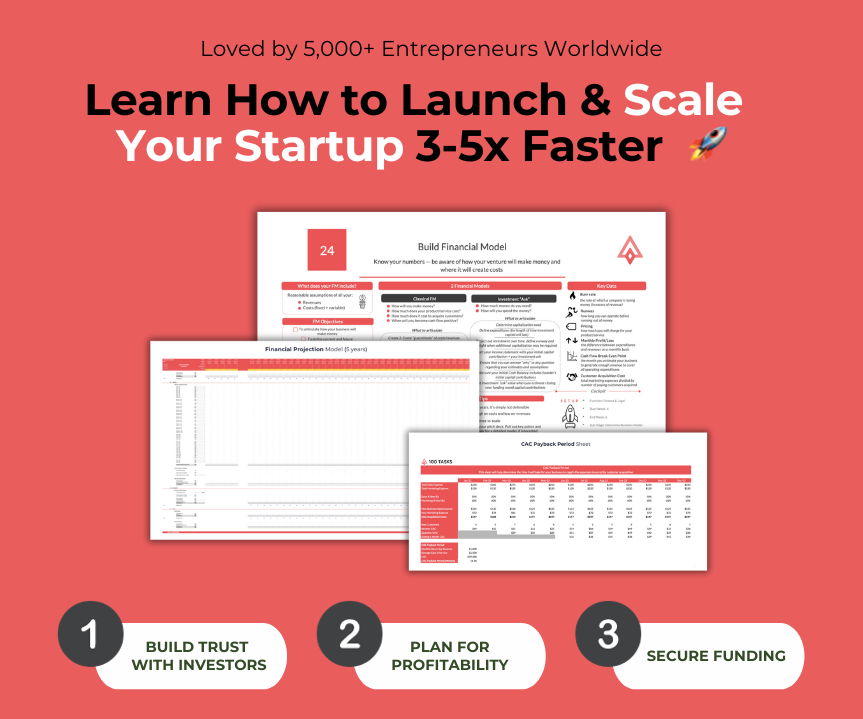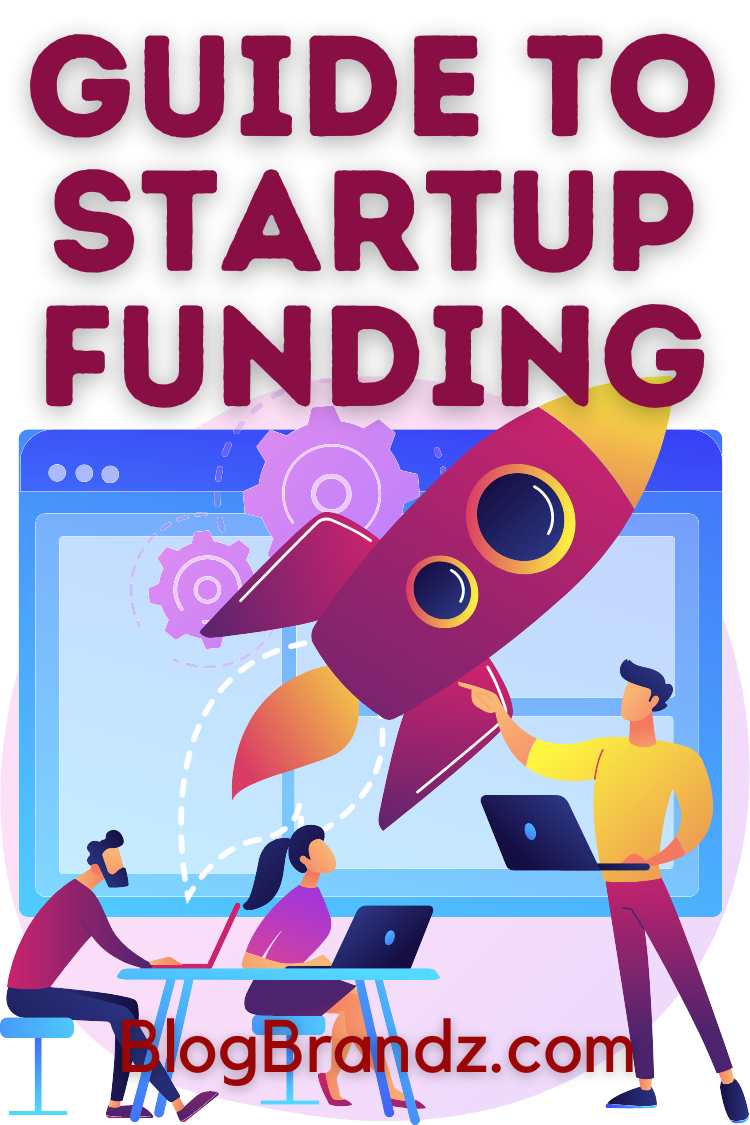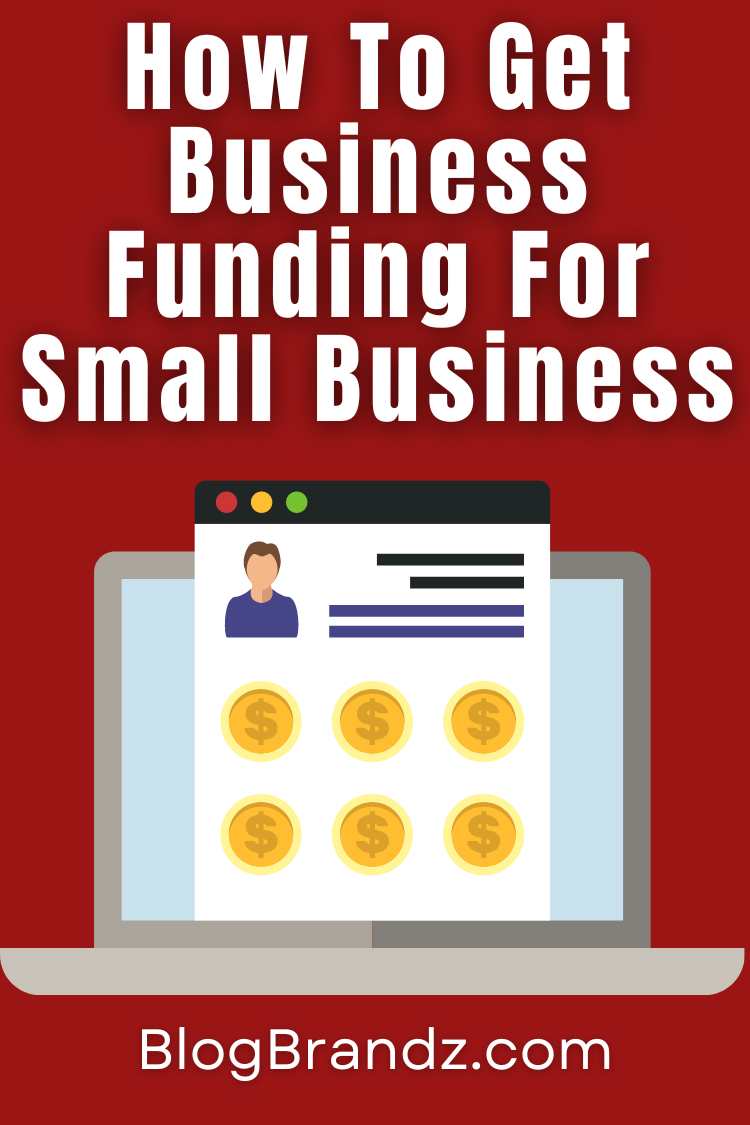Understand the basics of startup funding and navigate the funding landscape with precision, from seed to scaling success.
Embarking on the exhilarating journey of launching a startup is like setting sail into uncharted waters. The thrill of innovation, the passion for your idea, and the burning desire to make a mark in the business cosmos fuel your entrepreneurial spirit.
However, every cosmic journey requires a reliable launchpad, and for startups, that translates to securing the right funding. In this guide, we’ll be your guiding star through the vibrant universe of funding options for startups.
Disclaimer: The information provided is for general informational purposes only and should not be construed as legal or financial advice.
It is recommended to consult with qualified professionals for specific legal or financial guidance tailored to your individual circumstances. Any reliance on the information provided is at your own risk.
Contents
6 STAGES OF STARTUP FUNDING
Startup funding typically progresses through various stages, each serving a specific purpose in the development and growth of the business. The stages of startup funding include:
#1. Pre-Seed Funding
Purpose: Validate business ideas, conduct market research, and develop initial prototypes.
Investors: Founders, friends, family, and angel investors.
Pre-seed funding is the earliest stage of funding that a startup can receive. It occurs during the concept or idea phase, where founders use this initial capital to conduct market research, develop prototypes, and validate their business ideas.
Pre-seed funding is typically raised from the founders themselves, friends, family, or angel investors who believe in the startup’s potential.
The amount of pre-seed funding is usually smaller compared to later funding rounds and is used to kickstart the business and get it to a point where it can attract more substantial investment.
#2. Seed Funding
Purpose: Build and refine the product or service, expand operations, and achieve market validation.
Investors: Angel investors, venture capitalists, and early-stage investment firms.
Seed funding comes after the pre-seed stage and is considered the first formal equity funding round. At this point, startups have progressed beyond the initial idea and have usually built a minimum viable product (MVP) or achieved some level of market validation.
Seed funding helps startups scale their operations, refine their product or service, and reach a larger audience. Investors in seed funding rounds can include angel investors, venture capitalists, and early-stage investment firms.
The amount raised during a seed funding round can vary widely, depending on the startup’s industry, business model, and growth plans.
#3. Series A Funding
Purpose: Scale the business, increase market share, and refine business strategies based on initial market feedback.
Investors: Venture capitalists and institutional investors.
Series A funding marks a pivotal phase in a startup’s journey, typically occurring after seed funding. At this stage, the business has proven its viability and achieved initial market traction.
The primary goal of Series A funding is to secure significant capital to scale operations, expand market reach, and fine-tune business strategies.
Venture capitalists and institutional investors are the primary players in Series A rounds, contributing funds that empower startups to solidify their position in the market and continue their growth trajectory.
Success in Series A funding sets the stage for subsequent rounds and positions the startup for sustainable expansion.
#4. Series B Funding
Purpose: Further scale operations, expand into new markets, and enhance product or service offerings.
Investors: Venture capitalists and institutional investors.
Series B funding represents a critical milestone in a startup’s evolution, following the early-stage funding rounds of seed and Series A. At this stage, the business has demonstrated market acceptance, showing significant growth and revenue generation.
Series B funding aims to propel the company to new heights by providing substantial capital for expanding operations, entering new markets, and enhancing product offerings.
Venture capitalists, institutional investors, and strategic partners typically participate in Series B rounds, seeking to support promising companies on their journey to becoming industry leaders. This funding stage sets the stage for achieving greater scale and market dominance.
#5. Series C Funding & Beyond
Purpose: Achieve significant scaling, explore global expansion, and prepare for potential exit strategies.
Investors: Larger venture capital firms, private equity, and institutional investors.
Series C funding and beyond represent advanced stages in a startup’s funding journey, building upon earlier rounds like seed, Series A, and Series B. By this stage, the business has established itself as a market leader and aims for expansive growth or global expansion.
Funding rounds at this level involve securing substantial capital to further scale operations, explore new markets, invest in research and development, and potentially prepare for an initial public offering (IPO) or other exit strategies.
Large venture capital firms, private equity, and institutional investors participate in these rounds, supporting the startup’s journey toward sustained success and market dominance.
#6. IPO or Exit
Purpose: Go public through an Initial Public Offering (IPO) or pursue acquisition by a larger company.
Investors: Public market investors (IPO) or acquiring companies (exit).
An Initial Public Offering (IPO) or exit is the culmination of a startup’s funding journey, representing a significant milestone in its lifecycle. In an IPO, the company goes public by offering its shares to the public on a stock exchange.
This allows the startup to raise capital from a broader investor base and provides liquidity for existing stakeholders. An exit, on the other hand, can involve the acquisition of the startup by a larger company.
Both scenarios provide an opportunity for investors, including venture capitalists and early backers, to realize returns on their investments. IPOs and exits are strategic moves that mark the transition from a private startup to a publicly traded entity or a successful acquisition.
These funding stages provide startups with the necessary capital to navigate different phases of growth, from the initial idea to becoming a mature and established company.
Founders need to align their funding goals with the specific needs of each stage, presenting a compelling case to attract the right investors for their business’s current development level.
13 STARTUP CAPITAL FUNDING OPTIONS
Capital funding refers to the financial resources that a business raises to support its operations, growth, or specific initiatives. This business funding can come from various sources, including equity investors, debt providers, or alternative financing methods.
Capital funding is essential for businesses to invest in infrastructure, research and development, marketing, hiring, and other activities that contribute to their success and expansion.
The two primary forms of capital funding are equity capital, where investors receive ownership in the business, and debt capital, which involves borrowing funds that must be repaid with interest over time.
The choice of capital funding depends on the business’s financial needs, risk tolerance, and growth strategy. Explore an array of startup funding constellations, each shining with unique opportunities and potential partnerships.
#1. Bootstrapping for Startups
Description: Self-funding your startup using personal savings or revenue generated by the business.
Bootstrapping is a practical strategy for startups to self-fund by using personal savings or initial revenue. It is a viable approach for various types of startups, allowing them to be self-sustaining without relying heavily on external funding.
To navigate this approach successfully, prioritize efficiency through lean operations and focus on immediate revenue streams for a sustainable financial position.
Additionally, considering part-time work during the early stages can provide an extra income boost. This hands-on approach not only instills financial discipline but also cultivates a resilient, self-reliant spirit, guiding your startup toward success.
Eligibility criteria for bootstrapping:
Bootstrapping, as a self-funding approach, doesn’t have traditional eligibility criteria, but certain characteristics increase the likelihood of success:
- Lean Operations: Startups with a focus on operating efficiently and minimizing unnecessary expenses are well-suited for bootstrapping.
- Immediate Revenue Streams: Businesses that can generate revenue early on, even if modest, are more resilient when relying on internal funds.
- Founder’s Financial Discipline: Entrepreneurs who are financially disciplined, and able to manage personal and business finances judiciously, often find success in bootstrapping.
- Flexibility and Adaptability: Startups that can pivot and adapt to market changes without relying heavily on external funding are more suitable for bootstrapping.
- Incremental Growth: A business model that allows for incremental growth, where profits can be reinvested back into the company, aligns well with bootstrapping.
- Proven Concept: A startup with a validated product or service concept that has received positive market feedback may find bootstrapping more feasible.
- Industry-Specific Factors: Certain industries or business types may be inherently more conducive to bootstrapping, such as consulting services or freelance work.
- Personal Commitment: Bootstrapping often requires a strong personal commitment from founders who are willing to invest their time, skills, and personal savings into the venture.
- Low Capital Requirements: Businesses with lower initial capital requirements or the ability to stage their development may find bootstrapping more practical.
- Network and Support: Entrepreneurs with a strong professional network and support system can leverage these connections for advice, partnerships, and opportunities, reducing the reliance on external funding.
While bootstrapping provides autonomy, it requires a strategic and disciplined approach. Entrepreneurs should assess their business model, financial capabilities, and risk tolerance to determine if bootstrapping aligns with their startup journey.
Remember, successful bootstrapping often involves careful financial management, focusing on generating revenue early on, and maintaining a lean operation. The key is to start small, validate your idea, and gradually scale as your business gains traction.
#2. Angel Investors for Startups
Description: Individuals who provide capital in exchange for ownership equity or convertible debt.
While bootstrapping is ideal for some startups, others may seek external support from angel investors. They play a crucial role in startup success by providing capital in exchange for ownership equity or convertible debt.
To secure their support, craft a compelling pitch outlining your startup’s value proposition and growth potential. Build a solid presence in relevant networking circles, connecting with individuals who share your industry interests.
Transparency is crucial; showcase a scalable business model aligned with their investment objectives. By diligently following these steps, you can attract angel investors and establish lasting partnerships that foster your startup’s growth in the competitive business landscape.
Eligibility criteria for angel investors:
Securing funding from angel investors involves considerations beyond strict eligibility criteria, focusing on attracting individual investors. Key factors for startups seeking angel investment include:
- Compelling Value Proposition: Startups with a clear and compelling value proposition, addressing a genuine market need, are more likely to attract angel investors.
- Strong Founding Team: A capable and dedicated founding team with relevant industry experience enhances the appeal for angel investors.
- Scalability and Growth Potential: Angel investors seek startups with the potential for substantial scalability and growth, offering significant returns on their investments.
- Clear Revenue Model: Startups with a well-defined and realistic revenue model, showcasing how they plan to monetize their product or service, attract angel interest.
- Market Traction: Demonstrating market traction, such as user acquisition, customer feedback, or early sales, validates a startup’s potential and increases attractiveness to angel investors.
- Investor Alignment: Startups that align with the interests and expertise of potential angel investors are more likely to secure funding.
- Communication and Pitching Skills: Effectively communicating the startup’s vision, mission, and potential impact, coupled with polished pitching skills, enhances the chances of attracting angel investment.
- Transparency and Openness: Maintaining transparency regarding the startup’s progress, challenges, and future plans fosters trust with angel investors.
- Investment Terms: Offering fair and well-structured investment terms, including equity or convertible debt, is crucial for attracting angel investors.
- Exit Strategy: Clearly defining an exit strategy, such as acquisition or IPO, assures angel investors of potential returns on their investment.
- Network and Referrals: Leveraging personal and professional networks, as well as seeking referrals from industry connections, can enhance visibility and credibility with angel investors.
Angel investors, with their expertise and financial support, can play a crucial role in helping these ventures take flight and navigate the competitive landscape.
Entrepreneurs should tailor their pitches and business plans to align with these considerations, showcasing the startup’s potential and appealing to the interests of individual angel investors.
#3. Venture Capital (VC) for Startups
Description: Professional investment firms that provide capital in exchange for equity.
Venture Capital (VC) acts as vital fuel for ambitious startups, provided by professional investment firms in exchange for equity. To secure a partnership with VC firms, embark on crafting a comprehensive business plan that highlights your vision and strategy.
Validate your startup’s orbit by demonstrating market traction, emphasizing customer acquisition, and validating your product or service.
Networking becomes your launchpad—cultivate relationships with VC firms, attend industry events, and engage in strategic conversations.
Eligibility criteria for VC investment:
Eligibility criteria for Venture Capital (VC) investment can vary among different venture capital firms, but common factors include:
- High Growth Potential: Startups with the potential for significant growth and scalability are often preferred by VC firms.
- Innovative Product or Service: VC firms look for startups with innovative and unique offerings that can disrupt or revolutionize their respective industries.
- Competent and Committed Team: A skilled and committed founding team with a track record of success or relevant experience is crucial for VC investment.
- Addressable Market: VCs seek startups targeting sizable and growing markets, demonstrating the potential for substantial returns on investment.
- Traction and Milestones: Startups that have achieved significant milestones, such as user adoption, revenue generation, or product development, stand out to VCs.
- Clear Exit Strategy: VCs look for startups with a well-defined exit strategy, such as acquisition or initial public offering (IPO), to ensure potential returns on their investment.
- Scalable Business Model: Ventures with a scalable business model that allows for rapid growth without proportional increases in costs are attractive to VC investors.
- Market Differentiation: A unique value proposition and a competitive edge that differentiates the startup from existing or potential competitors.
- Preparedness for Due Diligence: Startups should be prepared for rigorous due diligence, providing comprehensive documentation related to finances, legal matters, and operations.
- Alignment with VC Focus: VC firms often have specific industries or sectors they specialize in. A startup’s alignment with the VC’s focus can increase eligibility.
It’s essential for entrepreneurs seeking VC funding to thoroughly research potential investors, understand their investment criteria, and tailor their pitches accordingly.
Building relationships within the startup ecosystem, networking at industry events, and seeking introductions can also enhance a startup’s visibility and chances of securing VC investment.
By aligning your trajectory with these practical tips, you’ll position your startup effectively, propelling it toward success in the competitive business landscape.
#4. Crowdfunding for Startups
Description: Raising small amounts of money from a large number of people online.
Crowdfunding offers a unique funding avenue, relying on community support. It stands out as a dynamic force in the diverse array of funding options, enabling startups to collect small amounts from a broad online audience.
To propel your campaign successfully, construct a compelling narrative that resonates with potential supporters. Utilize the gravitational pull of social media to amplify your message, engaging with your audience across various platforms.
Platforms like Kickstarter and Indiegogo serve as gateways to this cosmic opportunity—ensure your campaign stands out by offering attractive rewards for backers.
Eligibility criteria for crowdfunding:
Eligibility for crowdfunding typically revolves around the creation of a compelling campaign, a clear value proposition, and the ability to engage and resonate with a broad audience.
- Compelling Story and Mission: Startups with a compelling and relatable story, coupled with a clear mission, resonate well with potential backers in the crowdfunding community.
- Tangible Product or Outcome: Crowdfunding campaigns that promise tangible products or outcomes, providing backers with a clear understanding of what they’re supporting, tend to be more successful.
- Engaging Campaign: Well-designed and engaging crowdfunding campaigns with multimedia elements, such as videos and images, capture the attention of potential backers.
- Transparent Budgeting: Clearly articulating how the funds will be used and providing a transparent budget instills trust among backers, making them more likely to contribute.
- Unique Value Proposition: Startups offering a unique and innovative value proposition stand out in the competitive crowdfunding landscape, attracting backers who seek something novel.
- Rewards and Incentives: Thoughtfully crafted rewards and incentives for backers, aligned with the campaign’s purpose, encourage higher participation and financial support.
- Community Engagement: Actively engaging with the crowdfunding community, and responding to comments and questions, fosters a sense of connection and trust.
- Marketing and Outreach: Effective pre-launch marketing and outreach efforts, leveraging social media and other channels, create anticipation and drive initial support.
- Realistic Funding Goal: Setting a realistic and justifiable funding goal enhances credibility and increases the likelihood of reaching or exceeding the target.
- Continuous Updates: Regularly updating backers on the campaign’s progress, achievements, and challenges maintains momentum and keeps the community informed.
- Pre-existing Audience: Startups with an existing audience or customer base have a built-in support network, increasing the chances of crowdfunding success.
Entrepreneurs should tailor their campaigns to resonate with the interests and expectations of the crowdfunding community. By mastering the art of crowdfunding, your startup can harness the collective energy of the crowd, transforming aspirations into tangible financial support.
#5. Grants and Competitions
Description: Winning funds through business competitions or applying for government and private grants.
Obtaining funds through business competitions or grants—whether from government or private sources—can strategically advance your venture.
Start by researching available grants and tailor your applications to meet specific criteria. Active participation in competitions not only exposes your venture to potential investors but also sharpens your pitching skills.
Eligibility criteria for grants and competitions:
Eligibility criteria for grants and competitions can vary widely based on the funding organization, industry, and specific goals of the program. However, common eligibility factors include:
- Type of Business: Some grants and competitions are industry-specific or focus on particular types of businesses (e.g., technology, healthcare, social impact).
- Business Stage: Eligibility may be tied to the stage of development, with some opportunities targeting early-stage startups, while others focus on scaling businesses.
- Geographic Location: Certain grants and competitions may be region-specific, aiming to support businesses in particular countries, states, or localities.
- Legal Structure: The legal structure of your business (e.g., LLC, corporation, nonprofit) may impact eligibility for certain grants or competitions.
- Ownership and Control: Some opportunities may restrict the ownership or control level held by founders or stakeholders.
- Mission and Impact: Grants and competitions focusing on social impact or specific missions may have eligibility criteria tied to aligning your business goals with their mission.
- Financial Need: Some programs target businesses facing financial challenges or those needing capital for specific purposes.
- Innovation and Uniqueness: Opportunities may prioritize businesses with innovative products, services, or business models.
- Market Traction: For competitions, having evidence of market traction, customer validation, or revenue generation may be important.
- Compliance and Legal Standing: Ensuring your business complies with legal requirements and has good standing may be a prerequisite for eligibility.
- Applicant Background: Some programs may consider the background, qualifications, or experience of the founders and key team members.
- Scalability: For competition, scalability and the potential for significant growth may be a key criterion.
- Previous Funding: Some opportunities may have restrictions based on whether your business has received previous funding or grants.
- Application Quality: The quality of your application, including the clarity of your business plan, financial projections, and proposed use of funds, may impact eligibility.
It’s crucial to carefully review the specific eligibility criteria outlined by each grant or competition and tailor your application accordingly. Thoroughly researching and understanding the requirements will increase your chances of securing funding.
By navigating this pathway with precision, your startup can capture the attention of sponsors and judges, unlocking a galaxy of financial opportunities.
#6. Corporate Sponsorship
Description: Partnering with larger corporations who invest in or support startups.
In startup financing, corporate sponsorship presents opportunities for symbiotic relationships with larger corporations. This involves partnering with entities willing to invest in or support emerging ventures.
To navigate this successfully, identify strategic corporate allies aligned with your startup’s mission. Craft compelling proposals illustrating mutual benefits, showcasing growth potential.
Tailor proposals to align seamlessly with sponsors’ goals. Through strategic collaboration, secure financial backing and gain access to invaluable resources and industry expertise.
Eligibility criteria for corporate sponsorship:
Eligibility for corporate sponsorship involves aligning with a corporation’s values, demonstrating mutual benefits, and presenting tailored proposals that showcase how the partnership can foster growth and success for both parties.
- Alignment of Values: The startup’s mission and values should align with those of potential corporate sponsors.
- Strategic Fit: The startup should offer a strategic fit with the corporate sponsor’s business objectives.
- Clear Mutual Benefits: Proposals must vividly demonstrate how the partnership will benefit both the startup and the corporate sponsor.
- Alignment with Sponsor Goals: Tailored proposals should seamlessly align with the specific goals and objectives of potential sponsors.
- Transparent Collaboration Plans: Startups should present transparent plans for collaboration, emphasizing how the partnership will contribute to mutual growth and success.
- Industry Relevance: Corporate sponsors may prioritize startups that are relevant to their industry or sector.
- Demonstrated Potential: The startup should showcase its potential for growth and success, indicating a promising future for the collaboration.
- Professional Presentation: Proposals should be professionally crafted, emphasizing clarity, conciseness, and a compelling narrative.
By meeting these criteria, startups can enhance their appeal to potential corporate sponsors, fostering successful and mutually beneficial partnerships.
#10. Debt Financing (Business Loans)
Description: Borrowing money that must be repaid with interest over time.
For startups seeking financial backing beyond bootstrapping or angel investments, small business loans and government loans offer strategic avenues. Debt financing provides a practical avenue where borrowed funds necessitate repayment with interest over time.
Small business loans, often facilitated by traditional banks, prove suitable for various ventures, including service-based businesses, local shops, or small-scale manufacturing.
Explore diverse options, including traditional bank loans and government-backed alternatives like Small Business Administration (SBA) loans, to identify the optimal fit for your venture’s needs.
Navigating these startup funding options requires meticulous planning, aligning business goals with loan terms, and presenting a compelling case for financial support.
Eligibility criteria for debt financing:
Before applying, thoroughly research and compare loan options from different lenders, understanding their specific eligibility criteria. Tailor your loan application to showcase your business’s strengths and mitigate any perceived risks.
- Creditworthiness: Maintain a robust credit score, demonstrating your reliability as a borrower.
- Business Stability: Lenders may prefer businesses with a stable operational history, showcasing the venture’s ability to generate consistent revenue.
- Repayment Capacity: Craft a solid repayment plan aligned with your startup’s cash flow, indicating your ability to meet repayment obligations.
- Legal and Regulatory Compliance: Ensure your business adheres to all legal and regulatory requirements, presenting a stable and compliant operation to lenders.
- Purpose of Loan: Clearly define the purpose of the loan, whether for working capital, expansion, or specific investments, to align with lender expectations.
- Collateral: Depending on the type of loan, lenders may require collateral as security. Assess the availability and value of assets that can be used as collateral.
- Business Plan: Present a comprehensive business plan that outlines your venture’s goals, market position, and how the borrowed funds will contribute to its success.
- Cash Flow Projections: Provide detailed cash flow projections to assure lenders of your startup’s ability to generate sufficient revenue for timely repayments.
- Industry and Sector: Certain lenders may specialize in specific industries or sectors. Seek lenders familiar with your business type to increase eligibility.
- Loan Terms Understanding: Familiarize yourself with the terms and conditions of various loan options, including interest rates, repayment schedules, and any associated fees.
- Financial Management: Demonstrate strong financial management practices, showcasing your ability to responsibly handle borrowed funds.
- Relationship with Lenders: If possible, establish positive relationships with lenders. Existing relationships or partnerships can positively influence loan approval.
- Previous Debt History: Your previous debt history, if applicable, may impact eligibility. A track record of responsible debt management enhances your appeal to lenders.
- Business Viability: Lenders assess the overall viability of your business, including its market potential, competitive advantage, and growth prospects.
Carefully assess your specific funding needs, repayment capabilities, and eligibility criteria before pursuing a business loan. Develop a solid repayment plan aligned with your startup’s cash flow for a sustainable trajectory.
What is one reason why the government would provide financial assistance to an entrepreneur? To stimulate economic growth by encouraging innovation and the creation of new businesses, which can lead to job creation and increased economic activity.
Consulting with financial advisors or loan specialists can provide valuable insights into optimizing your eligibility. With a careful and strategic approach, debt financing can serve as a calculated force propelling your startup toward sustainable expansion and success.
#11. Convertible Notes
Description: Short-term debt that converts into equity during a future financing round.
Convertible notes are a flexible funding instrument, acting as short-term debt that can transform into equity in future financing rounds. To navigate this process, establish clear conversion terms, including a fair conversion cap.
Eligibility criteria for convertible notes:
- Clear Terms: Define clear and transparent terms for conversion.
- Reasonable Conversion Cap: Establish a fair conversion cap to ensure equitable terms.
- Legal Counsel Engagement: Engage legal counsel to document terms and conditions meticulously.
- Mutual Safeguards: Safeguard the interests of both the startup and the investor in the convertible note agreement.
Engage legal counsel to document terms meticulously, protecting both the startup and the investor. With this structured approach, convertible notes can dynamically transition short-term financial support into long-term equity growth for your venture.
#12. Accelerators and Incubators
Description: Programs providing funding, mentorship, and resources in exchange for equity.
Accelerators and incubators emerge as pivotal players in the startup ecosystem, offering funding, mentorship, and resources in exchange for equity. To leverage these opportunities effectively, prioritize applying to reputable programs aligned with your industry and goals.
Capitalize on networking opportunities, connecting with experienced mentors and fellow entrepreneurs. Be open to absorbing invaluable guidance and insights, as mentorship often becomes a cornerstone of success.
Eligibility criteria for accelerators and incubators:
It’s crucial for founders to thoroughly research and understand the specific eligibility criteria of each accelerator or incubator program, as they can vary significantly based on the program’s goals and focus.
- Stage of Development: Typically, early-stage startups are eligible, with some programs focused on specific stages such as idea validation, MVP development, or scaling.
- Industry Alignment: Accelerators and incubators may specialize in specific industries, seeking startups that align with their expertise or focus.
- Founding Team: A competent and committed founding team is often a key criterion, with a strong emphasis on the team’s ability to execute the business plan.
- Innovative Concept: Startups with innovative and unique concepts or solutions are attractive to accelerators and incubators.
- Scalability: The potential for scalability and significant market impact is a crucial factor considered during the selection process.
- Market Traction: Some programs may prefer startups that have demonstrated market traction, user adoption, or revenue generation.
- Coachability: A willingness to learn and adapt, along with the ability to receive and implement feedback, is often highly valued.
- Diversity and Inclusion: Programs may actively seek diversity in terms of founders, team composition, and ideas, promoting inclusivity.
- Commitment and Availability: Founders should be committed to actively participating in the program and making the necessary time investment.
- Value Proposition: A clear and compelling value proposition, along with a well-defined problem-solving approach, enhances eligibility.
- Preparedness: Startups that have thoroughly prepared business plans, financial projections, and a defined roadmap are more likely to be selected.
- Networking Potential: Accelerators and incubators may consider the startup’s potential for networking and collaboration within the program and the broader ecosystem.
- Legal and Compliance: Compliance with legal requirements and ethical standards is a fundamental consideration for eligibility.
- Location: Some programs may have geographic preferences or restrictions, limiting eligibility based on the startup’s location or willingness to relocate.
Maximize these resources to refine your business model and accelerate your startup’s trajectory. With a strategic approach, participation in reputable accelerators and incubators can propel your venture toward sustained growth.
#13. Revenue-Based Financing
Description: Investors provide capital in exchange for a percentage of future revenues.
Revenue-based financing serves as a pragmatic force, with investors offering capital in exchange for a percentage of future revenues. To navigate this financial trajectory effectively, comprehend the terms of revenue sharing intricately.
Project future revenues with precision, underlining realistic growth expectations. Engage in negotiations that align with your business’s growth strategy, ensuring terms are fair and sustainable.
Eligibility criteria for revenue-based financing:
Eligibility for revenue-based financing requires a proven and viable business model with a minimum revenue threshold, positive cash flow, and scalability potential, with a clear understanding of repayment terms and strategic use of funds.
- Minimum Revenue Threshold: Startups are often required to have a minimum level of recurring revenue.
- Positive Cash Flow: Demonstrating positive cash flow or a clear path to profitability.
- Business Model Viability: A proven and sustainable business model with the ability to generate consistent revenue.
- Scalability: Potential for scalability to enable accelerated growth.
- Profit Margins: Healthy profit margins indicate financial stability.
- Repayment Terms Understanding: A clear understanding of the repayment terms, including the revenue percentage to be shared and the repayment period.
- Use of Funds: Articulating a strategic plan for utilizing the funds.
- Industry Focus: Alignment with the industry focus of the revenue-based financing provider.
- Financial Projections: Realistic and well-documented financial projections demonstrating growth potential.
- Business Plan: A comprehensive business plan outlining objectives and strategies.
- Duration of Operations: Preference for startups with a proven operational history.
- Use of Proceeds: Clear articulation of how the funds will drive revenue growth and enhance the business.
- Customer Base: A growing and diversified customer base.
- Legal and Compliance: Compliance with legal requirements and ethical standards.
- Founder Commitment: Demonstrated commitment of founders to the success and growth of the business.
By adopting a clear and strategic approach, revenue-based financing becomes a calculated tool to infuse capital, propelling your startup toward financial stability and success.
Remember to tailor your startup funding strategy based on your startup’s specific needs, stage, and industry. Combine multiple sources for a diversified and resilient financial foundation.
THE 100 TASKS FUNDRAISING KIT
Venture capitalists, angel investors, and investment funds all view startups through a similar lens. As a founder, your task is to comprehend the specific focus of these lenses.
This involves adopting a step-by-step scientific process to raise funds for your startup by mitigating risk, emphasizing potential returns, and crafting a compelling narrative grounded in authentic data.
The 100 Tasks Fundraising Kit by Martin Bell and Dr. Alexander Schröder (PhD in Fundraising) is a step-by-step scientific process to raise funds for your startup.
The 100 Tasks Holistic Ecosystem is an innovative platform designed to accelerate the growth of your business. It consists of 3 important pillars that teach you the process (LEARN), streamline the execution (POWERSHEETS), and provide hands-on guidance (COMMUNITY).
This is a bulletproof startup-building process with real-life cases covering the entire value chain (from Day 1 to IPO) applied to over 120 companies, some of which became unicorns like Zalando.
Click here to preview the 100 Tasks Fundraising Kit
Business & Leadership Tips
- The 100 Tasks Startup Fundraising Kit
- The Ultimate Founders Checklist to Launch & Scale Your Startup
- How To Become an Entrepreneur
- 10 Steps to Create a Startup Business Plan in Entrepreneurship
- How To Write The Perfect Elevator Pitch For Investors
- Best Business Courses To Learn Entrepreneur Skills
- How to Create a Compelling Company Vision as an Entrepreneur
- 25 Entrepreneur Characteristics Of Successful Business Owners
- How To Go From Employee To Entrepreneur Mindset
- How to Find a Business Partner for Entrepreneurial Success
- How To Learn Powerful Negotiation Skills In The Workplace
- How To Use The Law Of Attraction For Business Success
- How to Write Clearly and Concisely with Business Writing Courses
- E-Business Tools, Banking Tools & Small Business Finance Tools
- Best Recession-Proof Businesses To Start In An Economic Downturn
© 2024, Priya Florence Shah. All rights reserved.
Priya Florence Shah is a bestselling author and an award-winning blogger. Check out Devi2Diva, her book on emotional self-care for women. In her spare time, Priya writes science-fiction novels and poetry and chills with her two-legged and four-legged kids.
Discover more from Business & Branding Tips
Subscribe to get the latest posts sent to your email.





















